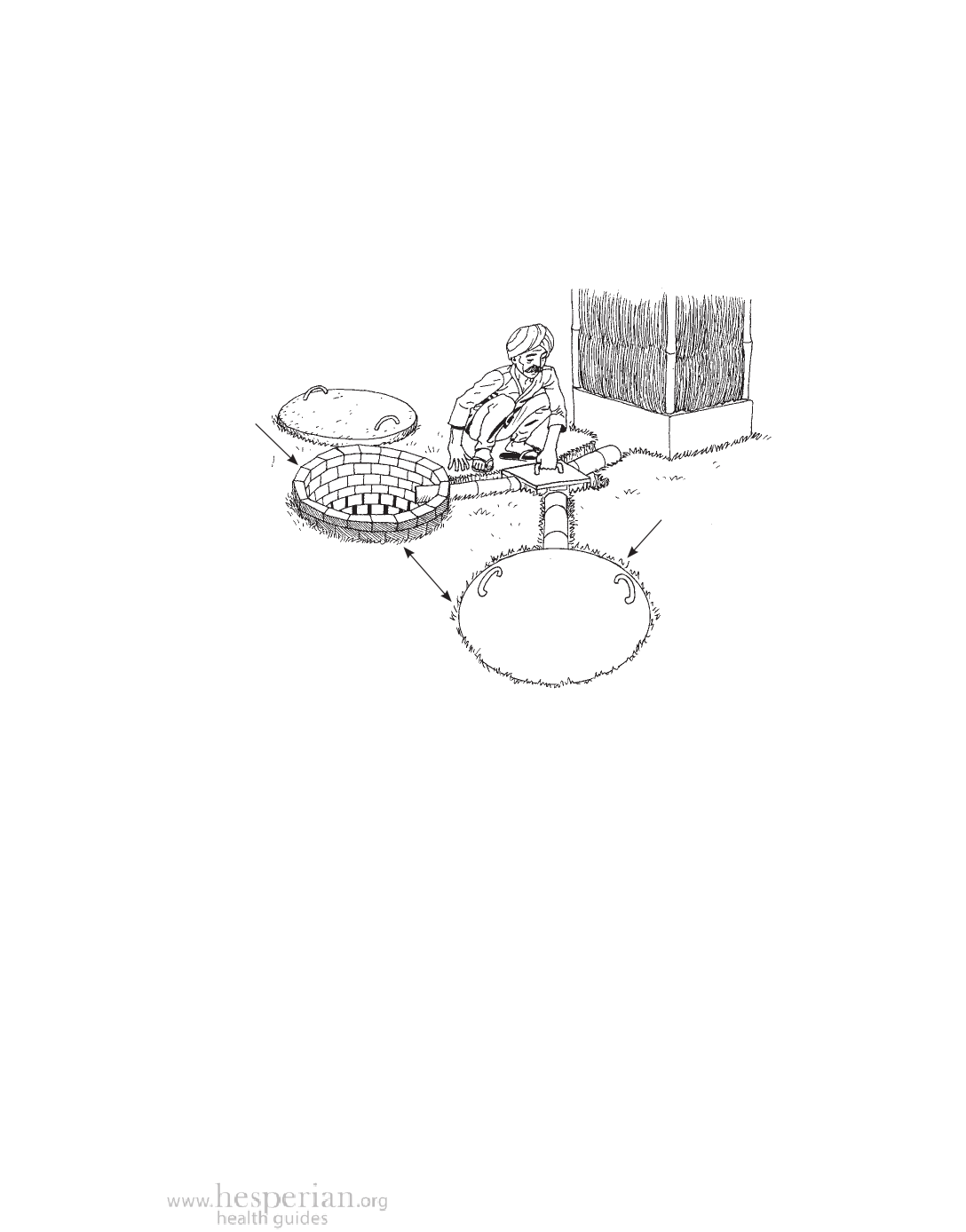
Pour Flush Pit Toilets 137
When building a 2 pit pour flush toilet
Depending on soil conditions and groundwater level, pour flush toilets should
never be built less than 3 meters from wells. In wet soil conditions the toilets
should be at least 20 meters from wells.
Pit shape: pits can be any
shape, but round pits are
the least costly and most
stable.
Pit lining
should be
brick or
stone, with
spaces left
for liquids to
drain out.
The distance between pits
should be at least the same as
the depth of the pits. If the pits
are 1 meter deep, they should
be at least 1 meter apart.
Pits should be covered
with reinforced
concrete slabs, stone
slabs, or wooden
planks. The concrete
platform described
on page 121, without
a hole in the middle,
could make a good pit
cover.
To maintain a pour flush toilet
Water must be poured in after every use. Pouring a little water in before using
will also help keep the pan clean. Clean the toilet daily. To clean the squatting
pan, use detergent powder and a long handled brush. The pits can overflow if:
• the water seal gets blocked. If this happens, the toilet will not work.
• the groundwater is less than 3 meters deep. When this is true, there is
also a risk of groundwater contamination.
Emptying the pit
If the pits are built well and soil conditions and moisture are favorable, the
waste will slowly and safely absorb into the surrounding soil, and the pits
should not need emptying.
If waste does not decompose and absorb into the soil, the pit will need
emptying. Remove the pit cover, add a layer of soil about 30 cm (2 handwidths)
deep, and replace the cover. After 2 years, the contents can be removed with a
shovel and used as fertilizer.
A Community Guide to Environmental Health 2012